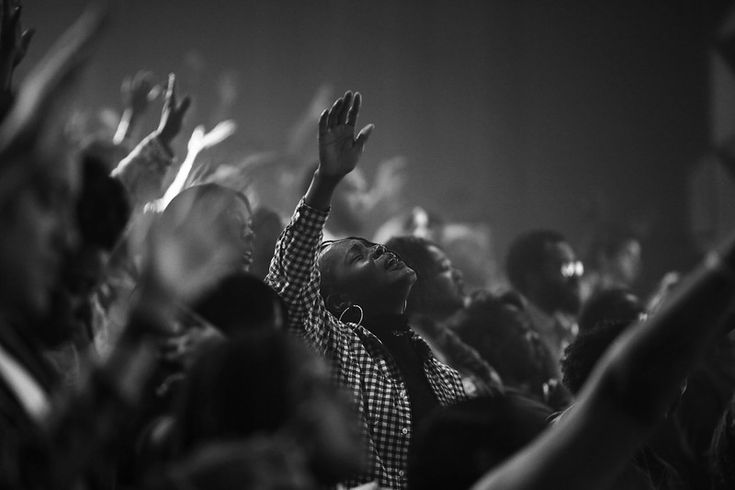Introduction
Christian music is something that has been part of worship for ages; it has been a devotional practice across time in church-related situations. Such hymns are today those sung in a cathedral, modernly in praise echoing along church halls. Music helps in expressing one’s faith as well as enhancing one’s community and worship experience. Evolution of contemporary and traditional practices of Christian music and worship, which has interwoven trends, will be focused on in this article.
The Role of Christian Music and Worship
Historical Significance
Christian worship has always included music. In the Old Testament, the Psalms are songs that sing anything from joy to sorrow. The early church appropriated this instead of preaching the doctrine-in-doctrines as hymns for people-another outcome over centuries. The reflections of culture and theological emphasis also progress in worship music.
Emotional Connection
Music has that singular quality that can evoke feelings and set the atmosphere for devotional acts, often to place the worshipper in the right space to appropriately commune with God in a very personal way so that individual experience can be enhanced. For whether serious in an old hymn or very jubilating in a contemporary worship song, music has been the medium for the expression of worship.
Traditional Christian Music and Worship
Hymns and Liturgical Christian Music and Worship
Based on the common usage of hymns and liturgical music, traditional Christian worship occurs. Many have contributed to this, and two of the foremost are Isaac Watts and Charles Wesley.
The Importance of Hymns
Hymns serve multiple purposes in worship:
- Teaching Doctrine: Carefully spelling out key theological concepts, such hymns have the value of teaching.
- Creating Community: The sound of congregational singing has a way of uniting congregants as one.
- Encouraging Reflection: Personal reflection and deepening of spirituality are generally evoked by these.
The Liturgical Calendar
Always becoming part of traditional liturgical worship-the liturgical calendar. It is that calendar that marks the church year’s course and so indicates the themes and music to be used in public worship-hymns and scriptures for Advent, Lent, Easter, etc., enrich the whole experience of worship.
Contemporary Christian Music and Worship
The Rise of Contemporary Worship
The last part of the century has seen an emerging process called “modern” or “contemporary Christian music.” As a result of this emergent gain, worship practice revolutionized. The term contemporary refers to the styles of rock, pop, and gospel music played on a modern instrument.
Characteristics of Contemporary Christian Music and Worship
- Accessibility: Most contemporary worship hymnody is singable, memorable, and therefore accessible to a large audience.
- Emotional Resonance: Much contemporary music is soul-inward and experience-deepening, creating avenues for a strong connection between the congregant and the spiritual elements of worship.
Popular Christian Music and Worship Songs
Many songs have become well-known for being used in contemporary worship. Some of them are:
- “How Great Is Our God” by Chris Tomlin
- “10,000 Reasons (Bless the Lord)” by Matt Redman
- “Way Maker” by Sinach
Blending Traditions in Worship
The Emergence of Blended Worship Styles
Blended worship in recent churches is a growing popular-the concept of blended worship was instituted many years ago. Both traditional and contemporary should be worshiped even today in this approach. It seeks to respect the old tradition of hymnody while opening itself to modern expressions in music.
Benefits of Blended Worship
- Inclusivity: It attracts all congregations of different musical preferences.
- The richness of Tradition: This infuses a traditional form and makes worship more engaging through the historical church linkages of the worship community.
- Fresh Expressions: Contemporary praise opens up concise and fresh worship for young generations. In this way, several blended services of worship. It contains both older hymns and nowadays songs.
For example, starting with the song “Amazing Grace” sung by an old writer and concludes with a young writer’s song like “Reckless Love.” These combinations usher in a dynamic worship experience to reach broader audiences.
Examples of Blended Worship
Many churches have already blended worship services. For example, an old hymn called “Amazing Grace” could be immediately followed by a modern song, such as “Reckless Love.” It has put up a good resonance in worship that can be reached by a wider audience.
Modern Worship Trends
Technology in Worship
Technology plays an important role in modern worship. Consider sound systems or visual aids: churches make technology useful for worship enhancement.
The Use of Visuals
Almost all churches are putting up screens to display lyrics, scripture, and multimedia content. In this practice, it will help the congregants follow the worship, which would give them an opportunity to engage more deeply.
Online Worship
The development of computer technology has also been responsible for online worship services, which could have looked as if it were going to go, but now it has brought churches much closer to their congregants who cannot physically attend church but would still want to participate in a worship community.
Benefits of Online Worship
- Accessibility: Worship can take place anywhere because of the internet.
- Community Building: Social media, through portals like chat rooms, help develop a community.
The Role of Social Media
It has now become much easier to promote worship music or even connect with congregants with the help of social media. Many artists and churches use these platforms like Instagram, Facebook, and YouTube to share their music, sermons, and worship experiences.
The Evolution of Worship Music
How Christian Music Has Evolved Over Time
This closely reflects all changes in cultures. The church has gone from solemnity in Gregorian chants to lively modern praise songs to be relevant to the changing needs of worship at all times in history.
Influences on Worship Music
- Cultural Trends: Popular musical trends, such as the emergence of rock and pop, have influenced the musical world of worship.
- Theological Developments: Doctrinal and practice changes have made more music to express faith in new forms.
Modern Hymns in Churches
While the modern worship age has progressed, there are new hymns that combine the old with the modern. “In Christ Alone” and “Build My Life” have some fantastic theological tenets set in a more recent musical package.
The Future of Christian Music and Worship
Emerging Trends
Going into the upcoming years, the following trends are observable in the Christian music and worship arena:
- Diversity in Worship Styles: Churches are turning towards diversity in worship, and that is, one of the reflections of the multicultural character in the world church.
- Collaborative Worship: There are worship leaders who are creating their compositions with other worship leaders across the continents and through denominations.
- Focus on Authenticity: One other aspect is the fact that there is now a greater emphasis on genuine expressions on the part of worship that draw their priority toward God rather than performance.
The Role of Tradition in Modern Christian Worship
While modernity may shape the worship practices at large, traditions must exist. Many congregants develop a sense of comfort and stability among traditional hymns and liturgical practices, thus balancing the old and the new.
Conclusion
Christian Music and Worship can thus balance modernization and traditionalism in such a venue that souls can relate to worship experiences. Then as we journey further, it is necessary to honor and reflect the rich history of Christian music with the new ways of expression. This will shape worship in the future: between God and humanity, a more profound touch. Thus, transformation, adaptation, and continuity are what comprise the journey of Christian music and worship.



